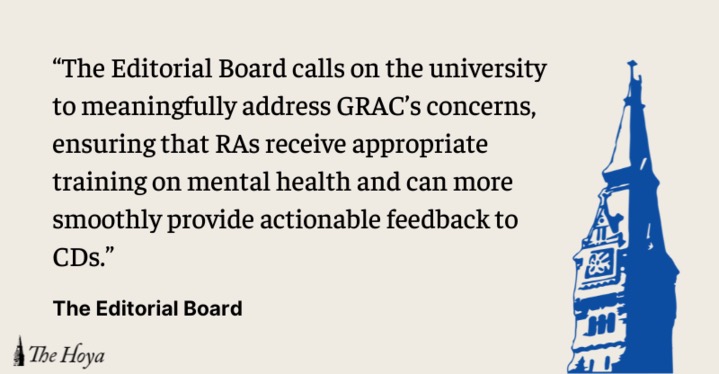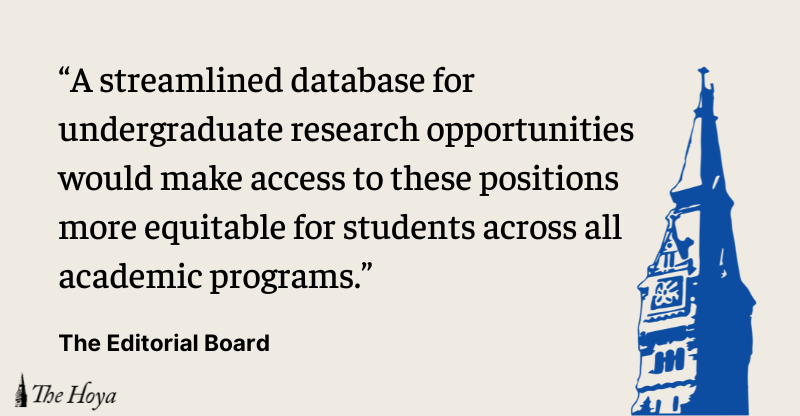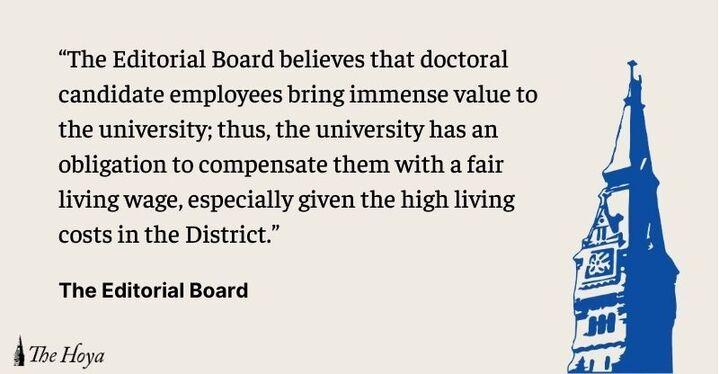In 1969, Georgetown University finally admitted female students into the college. Nearly 50 years later, the institution’s predominantly male leadership fails to include female perspectives.
Since becoming fully coeducational, Georgetown’s female student population has increased, even surpassing the number of male students in recent years, with a gender ratio of 56 to 44. To better represent the diverse perspectives of women, the university should actively seek women for senior leadership roles.
Women are increasingly rising to positions of academic leadership. In 1986, only 10 percent of college presidents in the United States were women; by 2016, that number had risen to 30 percent.
Despite the increase in the numbers of women in political and academic leadership, Georgetown’s senior leadership is mostly composed of men, stifling female perspectives.
At Georgetown, only five of 21 university vice president and C-suite positions are currently held by women: Rosemary Kilkenny, Claudia Stewart, Lisa Brown, Eugenie Dieck and Marie Mattson. Moreover, the university’s board of directors, which is composed of 39 members, has just 10 women.
Within the university’s academic leadership, only two of 12 schools have female deans — Patricia Cloonan of the School of Nursing and Health Studies and Kelly Otter of the School of Continuing Studies.
A senior leadership deficient in female representation lacks the different perspectives, strengths and experiences that women contribute. Such an imbalanced leadership swamps the voices of women and hinders their ability to effect equitable change on campus.
Women of color face even more disproportionate representation within Georgetown’s leadership. Of the 17 women in senior leadership positions mentioned, only two are women of color.
With few female leaders, Georgetown normalizes male-dominated leadership. A board of directors with 29 women and only 10 men would be shocking.
Likewise, gender imbalance in senior leadership does the community a disservice. To include women’s diverse perspectives and take steps toward gender equity, Georgetown should hire more women to balance the gender dynamic in its leadership positions.
Actively seeking to increase the institution’s female representation could also counter discrimination that women encounter in applying for leadership positions. With a status quo of male-dominated leadership, women are burdened with proving that they deserve to be included in certain conversations and positions.
Moreover, having women in leadership would empower female students at Georgetown. Studies have found that increased female representation contributes to policies that break barriers for women.
Georgetown’s historic Jesuit leadership and identity does not excuse the lack of female leadership. Since 2001, the university has been led by lay University President John J. DeGioia. The majority of senior leadership positions are also currently held by non-Jesuits.
In fact, the university’s Jesuit identity underscores the value of varying perspectives and identities; these values of inclusivity should apply at the senior level as well.
Seeking to recruit more women would not mean ignoring skills and focusing solely on the applicant’s gender. Georgetown should still hire the most qualified applicant but make efforts to include the varying perspectives and insights of women.
Though clearly the university is not purposefully looking to hire men for these upper-level positions, its current senior leadership suggests it is also not taking an active role in hiring women.
Taking a passive stance in recruiting women ignores the institutionalized bias that disadvantages women in the hiring process. Female applicants with the same qualifications as their male counterparts are rated worse in the hiring process, according to a Harvard Business Review study.
Georgetown must counter this bias by hiring more women in its senior leadership.
The same study also found that “if there’s only one woman in your candidate pool, there’s statistically no chance she’ll be hired.” Focusing efforts at hiring women would increase the number of female applicants and ensure that there are more qualified applicants.
To combat an already biased system, Georgetown should take an active role in recruiting women to senior leadership positions. Not making an effort to recruit women ignores the disadvantages that they face in the process and further normalizes male-dominated leadership.
In order to reflect the diversity of perspectives present on campus, Georgetown’s senior leadership must increase female representation.
Correction: This editorial was updated on Dec. 10 to include additional university officers.
The Hoya’s editorial board is composed of six students and chaired by the opinion editor. Editorials reflect only the beliefs of a majority of the board and are not representative of The Hoya or any individual member of the board.













